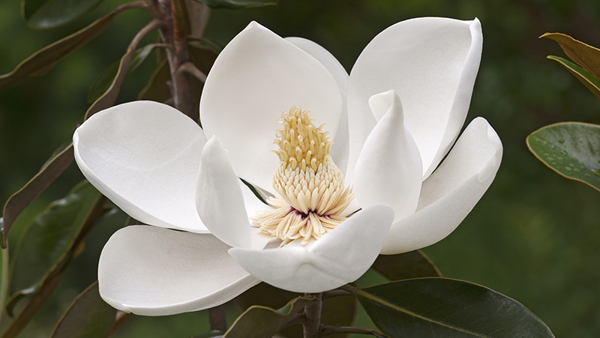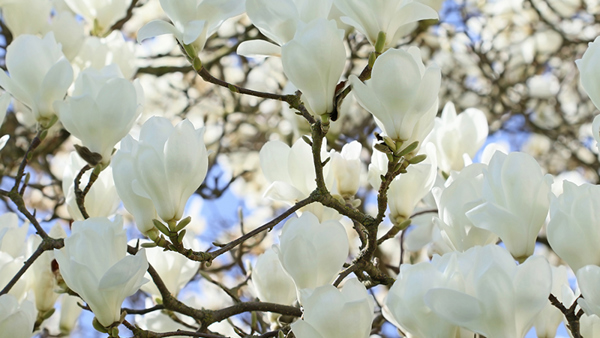Yates Account
Join now
Create a Yates account today!
Sign up to join the Yates Garden Club for monthly e-mails packed with seasonal inspiration, tips for success & exclusive promotions.
Plus if you’re a Garden Club member you can take part in the Yates Growing Community - a blog to share successes, get advice & win prizes in fun challenges along the way!

Forgot password
Enter the email address associated with your account, and we'll email you a new password.

How to grow magnolias in a garden
- Choose a spot that gets full sun to part shade.
- Clear any grass or ground-covering plants from the planting area to about a metre across, then dig in plenty of Yates Thrive Natural Blood & Bone with Seaweed and good quality compost into the soil.
- Dig a planting hole that’s about twice the width of the pot and approximately the same depth.
- Carefully take the plant out of the pot with care (magnolias hate root disturbance) and sit it into the planting hole.
- Position in hole and backfill with soil, gently firming down. Form a raised or doughnut-shaped ring of soil around the outer edge of the plant's root zone. This helps keep water where it's needed. Water in well with diluted Yates Thrive Natural Seaweed Tonic - this helps reduce transplant shock.
- Mulch with an organic mulch, such as bark chips, woodchip or pea straw around the base of the plant, keeping it away from the trunk.
- Water deeply, once or twice a week, depending on soil and weather conditions.
- Feed regularly with Yates Thrive Rose & Flower Granular Plant Food. TIP: For an added boost during flowering time, apply Yates Thrive Roses & Flowers Liquid Plant Food.


How to grow magnolias in a pot
Be sure to choose dwarf or small varieties
- Choose a pot at least double the size of the root ball. Position in full sun to part shade and fill with quality potting mix, such as Yates Premium Potting Mix.
- Remove the shrub from the container, taking care not to disturb any of the roots.
- Position in hole and backfill, gently firming down. Water in well.
- Water deeply, twice to three times a week, depending on soil and weather conditions.
- Feed regularly during the flowering season with Yates Thrive Roses & Flowers Liquid Plant Food. TIP: For an added boost apply Yates Thrive Natural Fish & Seaweed+ Plant Food Concentrate.
Growing tips
- Because magnolias hate being dry, it can be helpful to add some Yates Waterwise Water Storage Crystals into the planting medium before planting out.
- Summer heat and drought often cause most seasonal damage to magnolias and it’s not unusual for the leaves to develop brown edges in late summer. Good watering and mulching will reduce this problem.
- Keep plants watered during dry weather but don’t let too much water sit around their roots. If unsure, check the soil prior to watering.
- Mulch annually after flowering with a thick layer of organic material.
- Evergreen magnolias can be trimmed back, but seasonal pruning should be avoided with most of the deciduous varieties unless absolutely necessary.
- These plants are a popular choice for formal gardens due to their strong form, flowers and leafy growth.
Species that are commonly grown include:
Bull Bay Magnolia (M. grandiflora)
Large evergreen tree that can grow up to 20 metres in height. Best grown in large areas as its ultimate size and form is similar to that of a Moreton Bay Fig tree. Not recommended for the home garden.
Dwarf Magnolia (M. grandiflora ‘Little Gem’)
‘Little Gem’ Magnolia is an evergreen variety that can grow to about 4 metres tall. It has white creamy flowers that appear in the spring and summer and lovely deep green leaves with bronze colouring on the underside.
‘Teddy Bear’ Magnolia (M. grandiflora ‘Teddy Bear’)
Very popular tree for the home garden. Leaves are similar to that of the ‘Little Gem’ Magnolia but it can grow to about 6 metres. Flowers appear in summer.
Port Wine Magnolia (M. figo, syn. Michelia figo)
Evergreen shrub that grows to around 3 metres tall. Leaves on this tree are small and light green, with small pinky-white flowers that have a scent reminiscent of bubble gum that appear from September to November. These plants can be kept trimmed back and hedged or shaped into balls.
Black Tulip Magnolia (M. x soulangeana ‘Black Tulip’)
Small deciduous tree that can grow to 5 metres in height. This variety produces large deep purple tulip-like flowers in spring.
Yulan Magnolia (M. denudata)
Small decidious tree that can grow to 5 metres tall. In Spring they produce a lovely large white flower that stands out on their bare branches.
Felix Magnolia (M.’Felix’)
Small decidious tree that can grow to about 4 metres in height. It produces large fragrant flowers (around 30cm in width!) in a very hot-pink colour. A great feature tree for any garden.
















Share
Share this article on social media